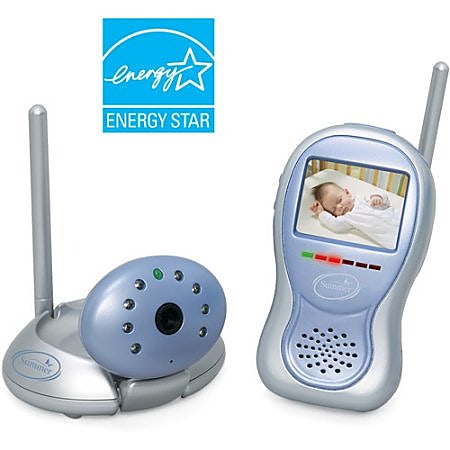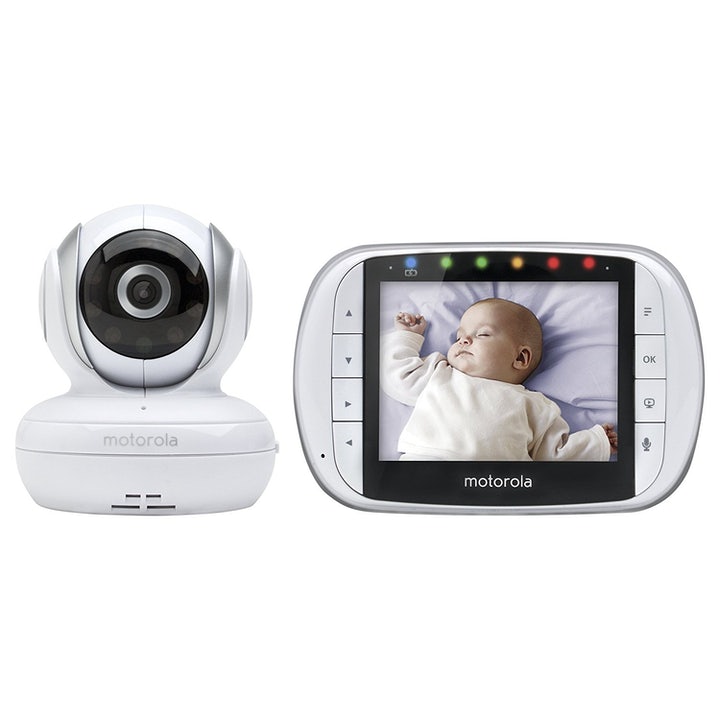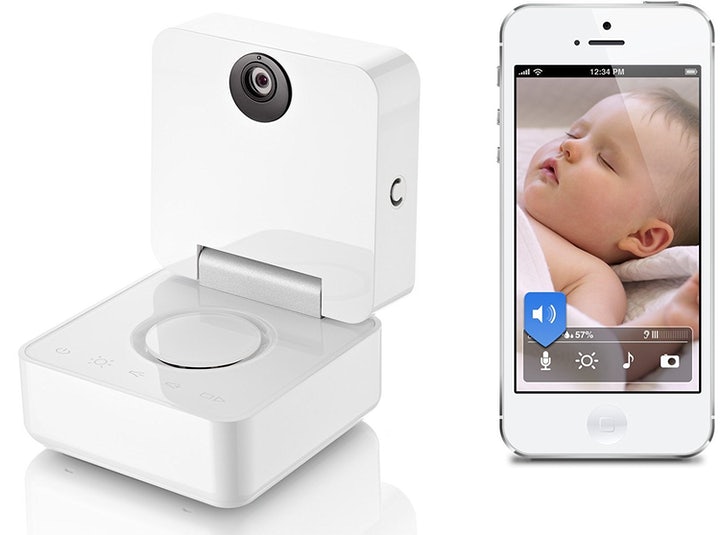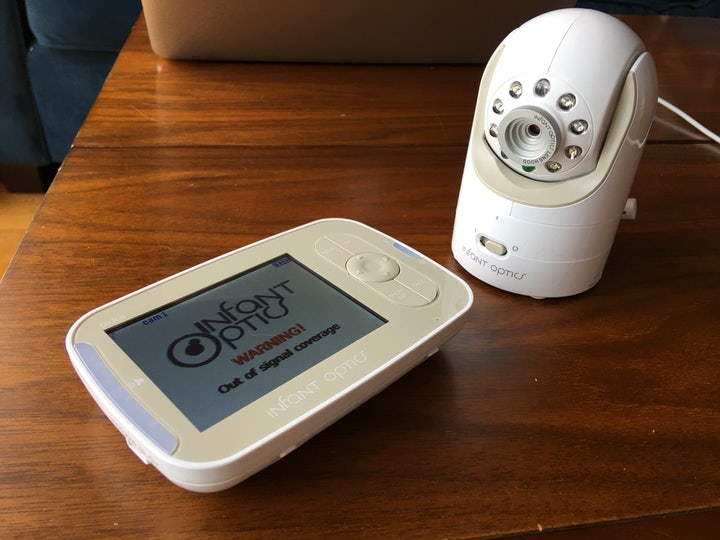My wife and are I about to have a baby, which is great! But as most new parents quickly learn, modern babies seem to need a lot of accessories – crib, changing surface, diapers, car seat, stroller, and, of course, a baby monitor (among many other things).
Choosing the right baby monitor proved to be an interesting challenge for me in particular: I recalled the various recent headlines of devices being easily hacked, their video streams compromised, and scary voices coming on the two-way talk functions and screaming things at babies in the dark.
As a journalist supposedly versed in science and tech, I wanted to be sure I selected the most secure device I could within our price point of around $200. After lots of reading and scouring the internet for different product listings, here’s what I learned about the state of baby monitor security, and the model I ended up purchasing.
Not All Wireless Transmission Technologies Are the Same
There are a few major types of wireless technologies that baby monitors use to connect the camera that’s watching your child to the receiver unit (or app) that you’re looking at and listening to.
Here I should mention that for the purposes of my hunt, I focused entirely on video monitors. There are still audio-only monitors you can buy, but broadly speaking, they rely on some of the very same wireless tech as the video ones, so the following can help you evaluate their security as well. Below, the three main categories of available video monitor:
Analogue baby monitors

These use one of the main available radio frequencies (generally 49 mHZ or 900 mHz, according to the Spruce) to transmit the sound and video from camera to the receiver.
The advantage to this is that it’s a very longstanding technology, so it may often be more affordable than a digital signal baby monitor. But it’s not as secure as other technologies — anyone nearby using a device on the same frequency as your analogue monitor can begin receiving your audio and video, or vice versa.
If you do encounter interference on an analogue monitor, there’s usually an option to manually switch the frequency to another unused one. MomTricks suggests that analogue monitors may be better for those who live in rural areas away from people and sources of possible interference, but because they are so often unprotected, I can’t in great conscience recommend them to anyone.
Digital baby monitors

These use a digital signal, which transmits and receives the audio/video as discrete numbers, rather than a continuous shape like analogue radio waves (usually on the 2.4 ghz frequency).
The advantage to this type of signal is that it can be more readily encrypted, meaning that even if someone else is using a device operating on the same frequency as your baby monitor, that person can’t easily see or hear what the baby monitor is capturing and transmitting.
Some digital baby monitors accomplish this by automatically switching signals in an effort to avoid eavesdropping, usually with a technology known as Frequency Hopping Spread Spectrum (FHSS). You can Google or product-search for baby monitors using that term or acronym – FHSS – and should come across several options.
This tech works by quickly changing the channel that your camera and receiver are using to communicate, and doing so on a seemingly random fashion, making it difficult for anyone else to casually encounter your baby monitor’s signal and listen in/watch.
However, researchers have found a dedicated attacker could still find and follow your signal as it “hopped” across channels – if the attacker were physically close enough to you (the range varies on baby monitors, but we’re talking nearby apartments, mostly) and had the right listening equipment.
Unfortunately, digital baby monitors can still suffer interference from other devices operating on the same frequency (especially ones using the 2.4 ghz frequency, which is used by tons of modern devices, such as wireless routers and bluetooth headsets).
This interference can come in the form of temporary drops in connectivity on your monitor or the other nearby devices – a source of frustration, yes, but that doesn’t mean it’s easy for these other devices to listen in or see your monitor video feed.
Another disadvantage to digital baby monitors, like analogue monitors, is that they are localised, meaning you have to keep your camera and receiver physically close together to maintain your connection – you can’t check in on your baby from 4,828km away, for example.
Some digital baby monitors use Digital Enhanced Cordless Communications (DECC), a type of wireless tech that offers less interference (operating on the lesser-used 1.9 ghz frequency) and may also come with encryption. But again, researchers have proven that dedicated hackers can bypass this.
WiFi and internet-connected baby monitors

These offer the most integration with smartphones, computers, and other consumer gadgets. That’s cool if you want to get a push notification on your phone every time your baby does something interesting.
These monitors also tend to have unlimited range, in the sense that as long as your camera and receiving device/phone are both connected to the internet, you should be able to check up on your baby from anywhere on Earth.
However, as with pretty much any “internet of things” device, WiFi baby monitors are susceptible to hackers — if you leave them unsecured, or the hackers somehow gain access to/bypass your passwords. These things also come with their own firmware that can have bugs and may not be automatically updated, meaning if a hacker finds out how to compromise one particular model, they can potentially gain access to all of devices in that model line around the world.
Most of the reports of baby monitor hacking I’ve seen from recent years seem to be centered around WiFi baby monitors, so I would personally avoid this category of devices entirely.
If you want to use a WiFi or internet-connected baby monitor, try to find one that lets you change the password on it and automatically updates with new firmware releases. If you’re using a WiFi/internet baby monitor, you’ll also want to update your home wireless network password and make sure only the people you trust know it.
My pick

After lots of research, I ended up ordering the Infant Optics DXR-8 Video Baby Monitor with Interchangeable Optical Lens which uses 2.4 ghz FHSS wireless transmission. It’s the Infant Optics DXR-5 Portable Video Baby Monitor might have been an even better bargain at just $238.28 on Amazon. It too uses the 2.4 ghz FHSS wireless standard, though it has fewer features, lacking the 2-way audio and temperature control of the DXR-8.
Baby monitors I’d consider: Any that offer 2.4 ghz FHSS or DECC built-in should be pretty good if you’re worried about basic security.
Baby monitors to avoid: All WiFi and analogue models, especially those that have been linked to security issues in the past, including the D-Link’s Digital Baby Monitor Day/Night Cloud Camera and Wireless N Network Camera, the WiFiBaby (WFB2015), Withing (WBP01), and the following seven models: iBaby M6, iBaby M3S, Philips In.Sight B120/37, Summer Baby Zoom WiFi Monitor & Internet Viewing System, Lens Peek-a-View, Gynoii, and TRENDnet WiFi Baby Cam TV-IP743SIC..

Comments